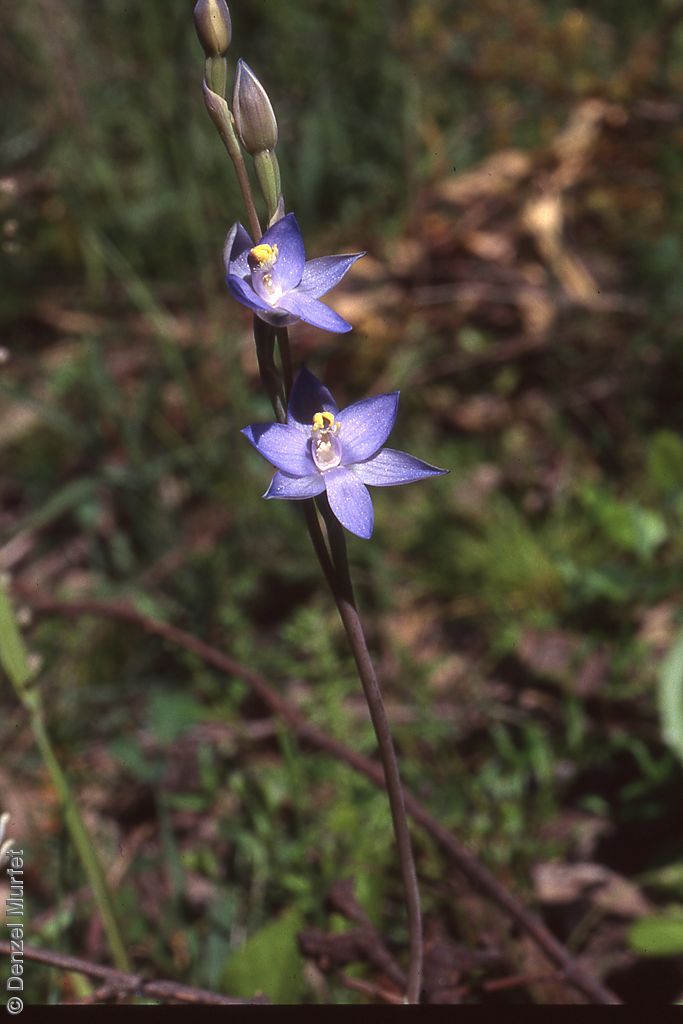
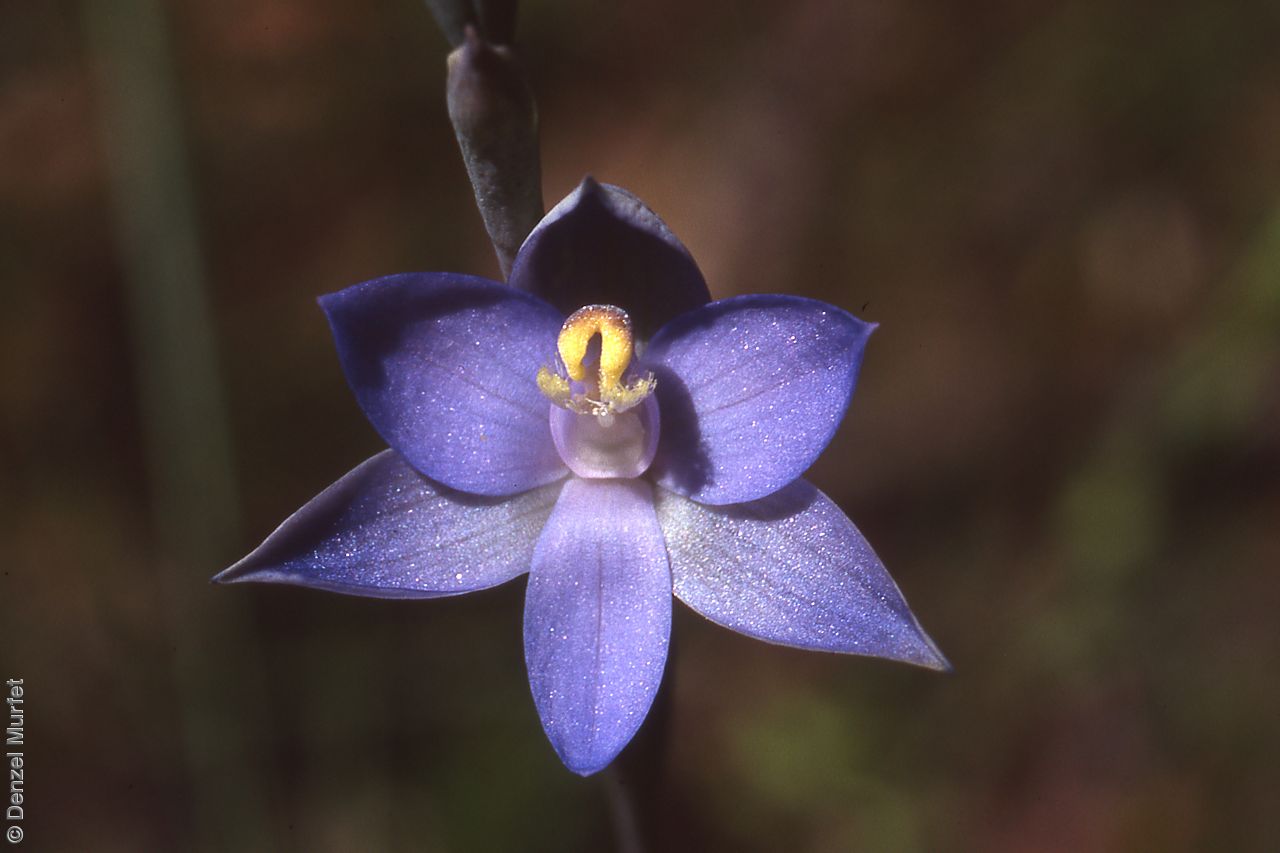
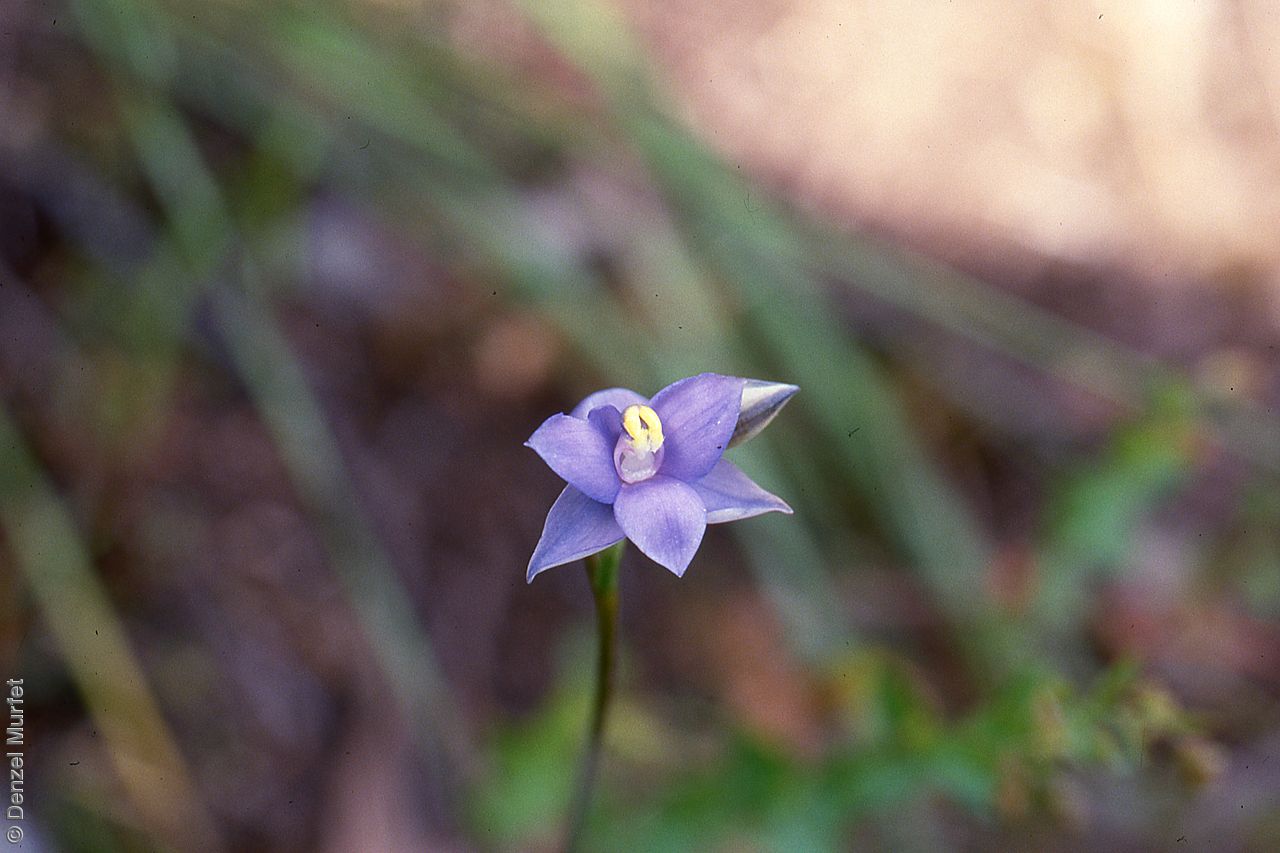
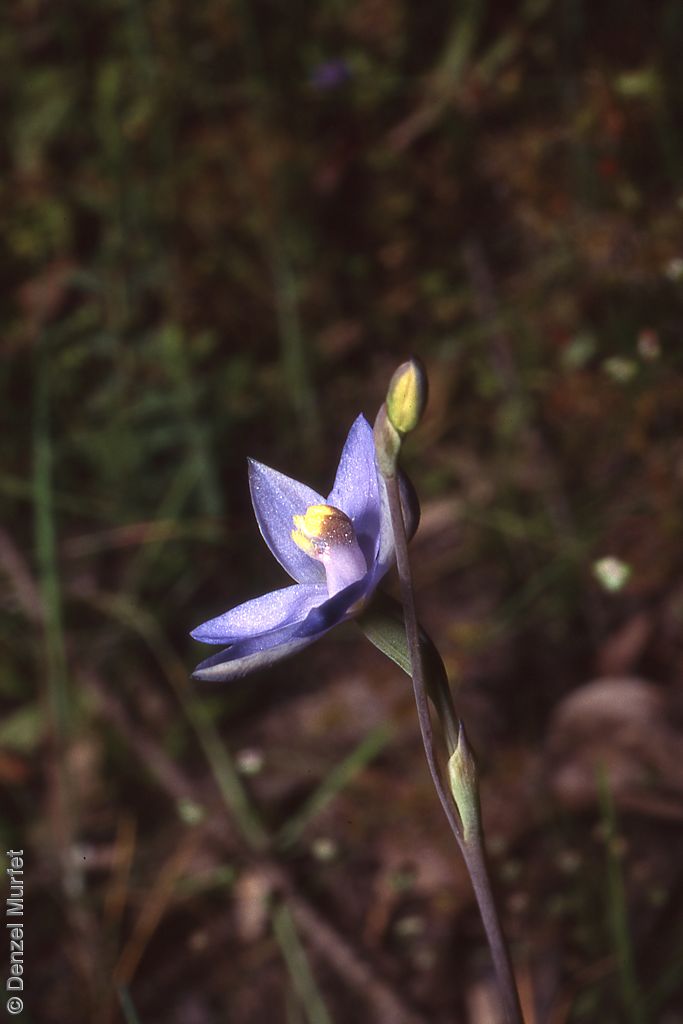
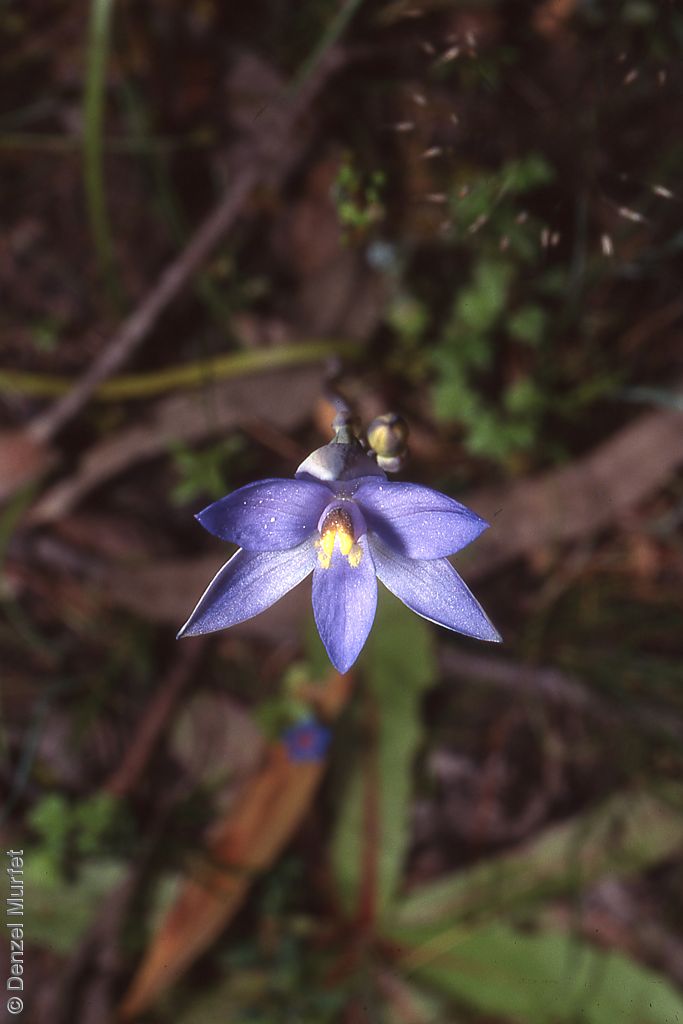
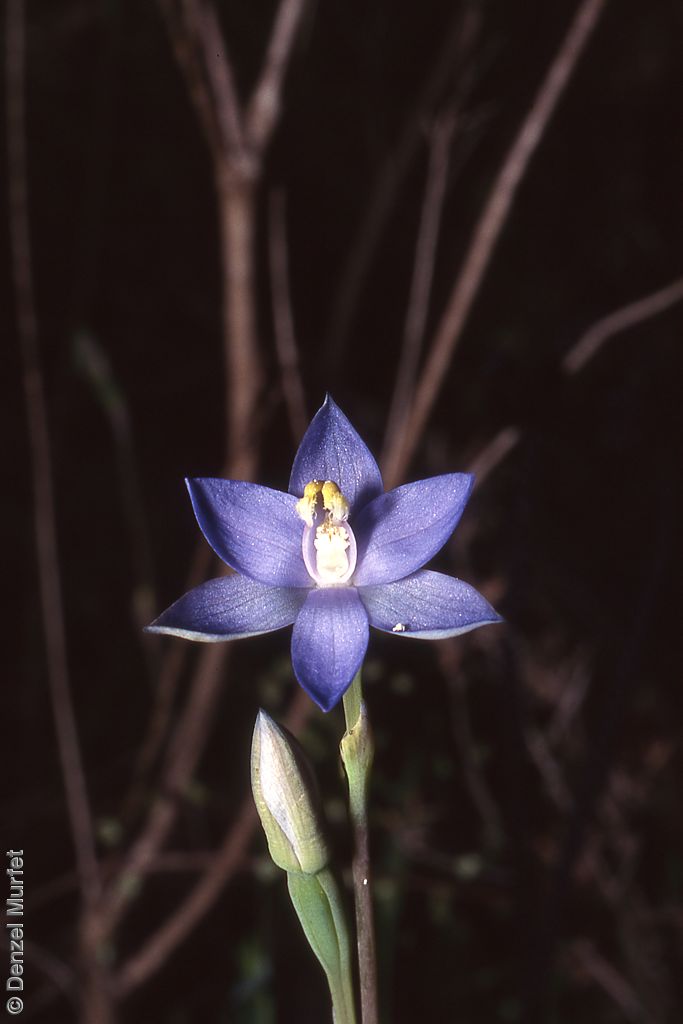


Common names
Inflated Sun-orchid
Plum Sun-orchid
Horay Sun-orchid
Etymology
Thelymitra from Greek 'thelys' meaning a bishop and 'mitra' meaning a headwear, hat, hence a bishop�s mitre, referring to the sometimes plumed or decorated wings of the column, which is usually produced behind and over the anther in a hood-like projection. Inflata from the Latin 'inflata' meaning puffed up or inflated, referring to the very inflated post-anther lobe on then column.
Distribution and status
Found in the southern Mount Lofty Ranges in South Australia, growing in dry to moist woodlands and open forest in wet0wet sites. Also found in Victoria and Tasmania. Native. Very rare in South Australia. Very rare in Victoria and Tasmania.
Herbarium regions: Murray, Southern Lofty, Green Adelaide
NRM regions: Adelaide and Mount Lofty Ranges, South Australian Murray-Darling Basin
AVH map: SA distribution map (external link)
Plant description
Terrestrial orchid with linear leaves to 30 cm long and 10 mm wide, erect, fleshy, dark green with purplish base. Flowering spike straight, green to purplish, to 65 cm high with 1-6 dark blue to purplish flowers opening only on warm to hot days. Flowering between late September and early December. Fruits are brown papery obovoid capsule 15 mm long and 6 mm wide, ribbed.
Seed collection and propagation
Collect seeds between December and January. Collect fat capsules as they start to dry and turn brown. Pods will split and release the seeds quickly and will require monitoring. To increase the chances of collecting mature pods, it is recommended that a small breathable bag (ie. Organza bags) be used to enclose the developing capsules. Place the capsules in a container that will hold fine seeds and leave to dry for a few weeks or until the capsule split. Then carefully hold the capsule and tap it gently to release the seeds. Store the seeds with a desiccant such as dried silica beads or dry rice, in an air tight container in a cool and dry place or in liquid nitrogen.